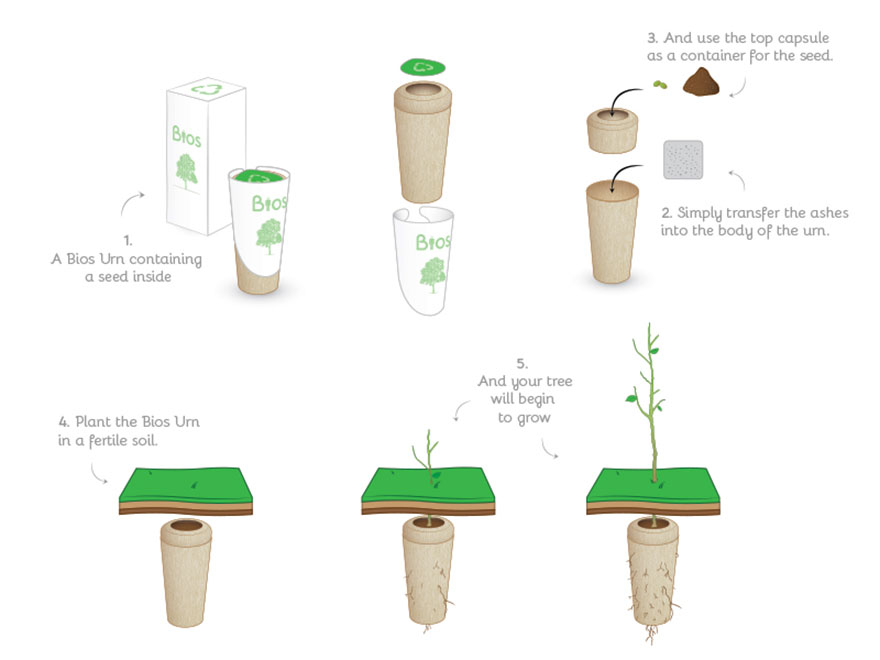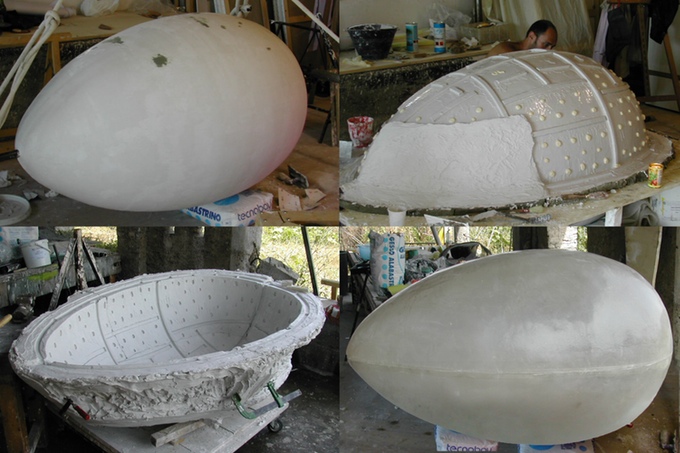In the past few years, I’ve had to say my final goodbye to my dad, grandmother, godfather, cousin, aunt, and best friend’s mom. People just have a way of dying don’t they? The good news is that when the memorial rituals were handled well, they were so meaningful that they created far more hope and joy than they destroyed. Given how much impact the way you memorialize someone can have on how you remember them, it’s no wonder a new industry around death tech is starting to get attention. Denying our mortality by embalming ourselves has slowly given way to cremation, organic burial, and a more honest dialogue around dying.
In 2015, the U.S. cremation rate overtook casketed burials for the first time in history, according to the National Funeral Directors Association. By 2030, the cremation rate is projected to be 70%. Those cremations open up the doors to new forms of burial that are now on sale through several retailers (including Amazon) for about $150. Compare that to average funeral cost of $7,000-10,000, and an organic burial or alternative option has even more appeal.
The Biodegradable Urn and Incubator
The Bios Urn looks like a fountain drink with a closed top. There’s a mix of soil at the top with a seed for a tree, and the ashes rest underneath. When the cup biodegrades, the nitrogen and other generative elements found in our bodies help nourish the soil. Anyone who’s read Where the Red Fern Grows probably remembers the symbol of ferns growing out of the graves of two loyal puppies. They’ll also remember just how much a child can cry when they learn that puppies die. The fact that children understand this metaphor even before they can fully grasp death, and are so moved by the symbolism, shows how innate our sense of interconnectedness is. That’s why the Bios organic burial option took off so quickly.

Bios also released the Incube, an incubator that allows you to keep those ashes nearby, and even indoors. You can care for them like a Bonsai tree. The Incube is a container that holds soil, and includes a sensor on top that automatically waters your tree through a built-in irrigation system. An app can even alert you when the temperature is off or your tree needs more sunlight. It helps you avoid the awkward inevitability of killing the tree that’s supposed to symbolize eternal life. My family would find that hilarious, but not many others would. The Incubes will be shipping in November for €350.
The Body Pod
The success of Bios eventually inspired Italian designers Anna Citelli and Raoul Bretzel to seek funding for a project called Capsula Mundi. It’s a similar concept, only this “pod” holds an entire body. The pods themselves are made with organic plastic, derived from plants. Unlike the Bios, the Capsula Mundi is placed first, and then the tree is planted second, increasing the range of flora the family can choose to grow as part of the organic burial process.

Citelli and Bretzel want to replace cemeteries without losing the sense people have of actually visiting their loved ones, not just their ashes. Families can care for the tree, imagining the person they love resting in the fetal position, having returned to the womb of mother nature. The symbolism here speaks to the “bell curve of life,” that became crystal clear for me during my dad’s decade-long struggle with Alzheimer’s Disease. We’re born, we go through adolescence and adulthood, and then we return to the wonder, dependence, and diapers of childhood. Then, when we’re ready, we go out the same way we came in: curled up in a warm place, dissolving into the soup of experience. A headstone can’t really compare to that image.

Unfortunately, Capsula Mundi didn’t reach its crowdfunding goal despite the positive press. According to the team: “Capsula Mundi is a challenging project about a difficult matter, as death and burial, and the success wasn’t given.” The fact that they don’t have a product to ship yet, and that this type of burial is still illegal in some countries doesn’t help. Who knew burying a body would be so complicated?
But fear not. For those looking for more luxurious burial alternatives, there’s always…
The Diamond Option
The Swiss company Algordanza hopes to hit the higher-status market with diamonds forged from the carbon in your loved one’s ashes, creating an entirely different option beyond organic burial. They range in cost from $5,000-20,000. The living relatives are included in every step of the process, down to the chemical analysis. When the precious stone is finally completed, it gets the Hope Diamond treatment: white gloves, a wooden box, and a quiet reveal. It all happens in a living room or a kitchen, rather than a church. The diamond itself includes no additives or excess carbon, and the final product will reflect the elements found in the body, personalizing each one. Surgeries, fake teeth and joints, and chemicals like boron and nitrogen found in excess, can all affect the hue of the diamond.

This was exactly the sort of thing I dreamed up for some of my relatives when I was trying to think of ways to carry them with me. Unfortunately, the sticker price was too high. I had to find the poor man’s solution, and I’m glad I did.
Death Isn’t Just Bad News
When my dad died last year, I was frustrated that the only thing people wanted to talk about was how sad it was, and what an asshole Alzheimer was for creating this evil disease. I already knew all of that. What I’d learned through the ordeal was that it was also one of the happiest times of my life. That’s harder to explain.
When my dad grabbed me and held me for the last time with his 75-pound body and told me to “stay,” erasing decades of interpersonal nonsense, I felt some sort of identity transference. Maybe it was a coming of age ritual or a loss of innocence, but it came with a noticeable increase in energy, confidence, and purpose. It felt like he had literally passed the torch to me. As something of a connoisseur of feelings, this was just about the best I’ve ever had.
When my dad finally died, I spent hours with his body, feeling the heat escape, listening to all the final words still echoing in the room. It wasn’t eerie; it was pure, unadulterated love. We cremated him, and then had an open mic with his old friends and colleagues. I handed out pieces of his hair—the only part of his body that hadn’t “died,” since hair is technically dead already. At every stage of this process, our shared mortality and our connection to nature was front and center. So was his true nature—his strengths and his weaknesses—without any revisionist history. Janis Joplin was front and center too, one of my dad’s favorite humans.
We didn’t have that diamond money, and the tree didn’t really seem his flavor, so there was no organic burial, but we were still rethinking the rituals we inherited in an exciting way that made the whole thing come alive. I’m pretty sure he would have dug it.

